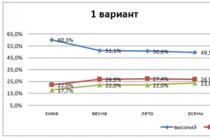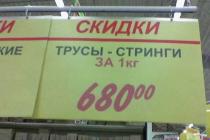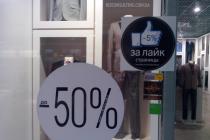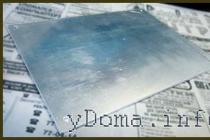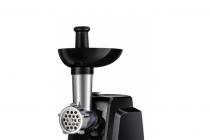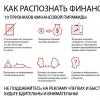The constant technological progress inherent in modern times is gradually replacing handicraft (manual) production and crafts that have come down to us from our ancestors from our lives.
But cold forging can undoubtedly be attributed to crafts that not only keep the competition, but are also gaining more and more popularity.
Forging elements are actively used:
- in the construction and design of country houses, residential premises and offices,
- in the production of furniture products,
- in the funeral business.
It is very difficult to imagine the exterior of a modern building without beautiful wrought iron bars, gates and gazebos. Due to this cold forging products are in high demand and relevant. This is one of the main factors that beginner businessmen pay attention to.
Forging combines art and ancient craft, thanks to which the cost of production is estimated not by the cost of the material, but by the complexity and beauty of the structure being created.

Thus, the sale of finished products or the provision of cold metal processing services for the population is a very profitable and promising line of business for beginners.
Features of the organization of production
Forging is usually associated with traditional blacksmithing, where metal is manipulated after it has been heated. Such forging requires special training and a certain level of skill from the blacksmith, which is honed over the years.
The process of "hot" forging is very labor-intensive and time-consuming: the metal is heated in special forges to the point where it becomes "soft" and with the help of hammers, presses and other devices it is given the desired shape, after which the part is cooled.
Today, cold forging technology has gained popularity..
Craftsmen process the metal using special equipment, so the process takes less time, and finished products are much cheaper for customers.

It is much easier to master this technology, which is attractive for beginner entrepreneurs.. However, according to professionals, the cold forging business has its own specifics, which should be taken into account when organizing a business.
Market analysis and competition
Before starting any business, it is necessary to analyze the sales market, determine consumer preferences and identify the level of competition. However, cold forged products do not belong to the category of essential goods, which complicates the solution of these problems.
In the process of determining the need for forged products the following points need to be clarified:
- The number of workshops and forges that are already operating in your area.
- What is the demand for forged products and in what volume?
- Where can products be sold?
- Determination of business seasonality.
- The product of what price category will satisfy the needs of users.
After the answers are received, the entrepreneurs will be able to make a final decision: is it worth doing a cold forging business in your area?
Technology mastering
It is difficult to organize a cold forging workshop without special knowledge and skills.
It will be a great temptation for an entrepreneur to hire an experienced specialist, however, this is not recommended at the initial stage of the business, as he will need to pay a large salary and you will be very dependent on him.
Therefore, before starting a business, a businessman will need to undergo training himself. Theoretical knowledge can be obtained even through the Internet: there is a lot of information on the Internet on the technologies of artistic and cold forging.

However, in order to learn how to cold work metal, practice is needed:
- You can get a job as a production worker or become an apprentice to one of your competitors.
- An experienced specialist should be hired only if there is no other choice. But in this case too, be sure to agree with the master that he will teach you his craft.
After the entrepreneur has gone through the learning process, he needs to draw up a detailed business plan to implement your idea. In this case, it is imperative to use the information obtained in the process of market analysis and training.
The success of a business will depend on how well the business plan is drawn up and how accurately it will be implemented.
It is worth noting that in some regions of Russia there are programs for state subsidies for small businesses, and the idea is financed on the basis of a business plan.
What is required at the start?
Practical steps for organizing any business must begin with state registration. The procedure is described step by step in the law “On State Registration of Legal Entities and Private Entrepreneurs”. In accordance with the law, a person engaged in entrepreneurial activities and receiving a steady income must be registered as an individual entrepreneur or LLC.
Room selection
The room must first of all comply with all fire safety requirements. The minimum area of the workshop should be 20 square meters. m. In addition, it is necessary to conduct electricity.
An insulated garage can be an ideal place for a workshop. It is worth taking care that the noise of production does not disturb the inhabitants of nearby residential buildings.
The cold forging process involves welding, which cannot be carried out in a small enclosed space. In addition, you will need a place to store finished products. For these purposes at the workshop it is necessary to organize a canopy.
The entrepreneur must ensure that the premises had a wide access road for trucks. Otherwise, the process of unloading raw materials and loading finished products will become more difficult.
Workshop equipment and tools
It is impossible to imagine a cold forging workshop without special equipment and tools. One of the main items of expenditure is investment in fixed assets.

At the initial stage, for manual cold forging, you need:
- Welding machine.
- Gnutik used to bend metal. It is the main tool for cold forging.
- Wave. Serves to give the metal a wave-like shape.
- Snail. It will help to give a spiral shape to metal rods.
- Twister. Used to twist a metal rod around an axis.
- "Flashlight", which is one of the varieties of twister.
- Crafting table, with the presence of a vice.
- Bulgarian.
- grinder for cleaning the surface of metal structures.
- Perforator, which may be needed when installing finished products.
At the initial stage, this equipment will be enough in the workshop.
The most well-known brands on the market that produce high-quality equipment are the German Eizenkraft and Metalkraft.
The process of making curls by cold forging with a snail, see the video:
Purchase of raw materials
For that, to save time and not miss an urgent order, stock up on raw materials in advance.
The cold forging process uses:
- Low carbon steel blanks.
- Various metal profiles: square, sheets, corners, rods, etc.
- Auxiliary compositions: anti-corrosion paint, primer, solvent and electrodes.
It is necessary to purchase raw materials from trusted suppliers which can also be found online. At the same time, it is worth paying attention to the correspondence between price and product quality.
Product range
Ideally, a cold forging workshop should work to order, because in this case there is no need to sell the goods.
However, for start-up entrepreneurs, especially if there is a lot of competition in the market, it is difficult to get an order. That's why at the first stage of work, you can engage in the production of actual products and their subsequent sale.
As the portfolio expands and authority emerges, large orders will also come.
At the initial stage, it makes sense to produce the following types of products:
- Metal bars on the windows.
- Gates.
- Peaks for the porch.
- Fences for various purposes.
- Fireplace accessories.
- Garden gazebos and garden furniture.

Example of financial calculations
The cost of starting a business is 720,000 rubles.
One-time expenses- 635,000 rubles.
- State registration - 10,000 rubles.
- Organization of the working space (repair and equipment of the workshop) - 25,000 rubles.
- Purchase of a minimum set of equipment and tools - 400,000 rubles.
- Purchase of the minimum amount of raw materials - 200,000 rubles.
Monthly expenses- 85 000 rubles.
- Room rental - 15,000 rubles.
- Salary fund for employees (2 masters) - 50,000 rubles.
- Utility expenses - 10,000 rubles.
- Other expenses - 10,000 rubles.
The average markup is 200% on the cost of production. In a highly competitive market, this is the most common markup on cold forged products.
For example: 535 rubles are spent on the production of 1 m of a lattice for a garden 2 m high. (metal - 500 r, anti-corrosion paint - 15 r, electrodes - 20 r). An appropriate share of current expenses is added to this amount (85,000 rubles / 250 products per month = 340 rubles).
The planned markup is added to the sum received as a result (535+340=875 rubles). As a result, the minimum cost of 1 meter of the lattice is 2600 rubles.
Conclusion
Cold forging is more related to the service sector, therefore to determine the profitability of a business, it is necessary to calculate the finished product.
It is worth noting that the success of your business will depend on how well you manage it. If the entrepreneur manages to use all production capacities and quickly sell finished products, then the profit from the business will be large and constant.
Business idea: cold forging of metal products
Where we do business: garage, territory of a private house
Main costs: purchase of equipment
Necessary equipment: welding machine, cutting machine, vise, drill
Consumables: metal, varnishes, paints
Initial capital: no more than 30,000 rubles.
Payback period: several months
Possible profit: 50,000 rubles. per month
A business idea based on cold forging of metal products. This idea can be attributed to a business with small financial investments; at the initial stage, only skill and no more than 30,000 rubles are needed.
At the initial stage of organizing this business, it is better for you to learn all the intricacies of manufacturing cold forged items yourself. To start, you will need a room under which a garage or an area near a private house will come down. Also a set of equipment:
- Welding machine
- Grinding machine (Bulgarian)
- Vise
- Drill, drilling machine
- Other small tool
The main skill will be the ability to use a welding machine.
Once you are familiar with cold forging, learn how to make simple objects, and perhaps find your first customers, you can purchase an additional set of bending equipment that will help you make complex elements. The cost of such a kit is about 55,000 rubles. Such a kit will help you make complex objects, make bends of the same shape at the same angle, and many other useful things.
|
|
The main decorative elements are sold separately. These elements include: flowers, peaks, monograms and others. You only need to weld them to the finished product, then clean the welding seams with a grinder and paint the product in the desired color. The main color that the products are painted in is matte black, but the ability to work with paint will help you create truly unique products. By mixing paints, you can achieve the color of aged bronze or copper, which will give your product a certain character.
Cold forging, unlike hot forging, provides many advantages and allows you to make unique products, such as fences, gratings, fences, peaks, flower beds, door hinges, accessories for fireplaces, , smokehouses, chandeliers, candlesticks, figurines of people and animals as decorative elements and much more.
Find a good decor supplier, usually a good supplier has over 1000 different items.
The final price for metal cold forging products consists of the cost of raw materials, the complexity of the work, the resources spent (fuel and lubricants, electricity), plus 100% of your work. That is, the profitability of the cold forging business is at least 100%.
How can you realize your abilities?
At the initial stage, it is better to take a course, at least self-learning forging. If there are forging courses in your city, in extreme cases - a welder, take them. If there are no such courses, then study on your own. Surely there are already companies in your city that make forged products, offer them your services as an independent craftsman, in case of a large number of orders. It will be good if you are offered a job, you can study and at the same time receive money, forging masters earn an average of 40,000 rubles. per month, with such an income, you can save up for a good set of equipment. When working in a company, keep in mind the main goal - to create your own company for the manufacture of forged products.
Sales of cold forged products.
As a rule, all products are made to order according to individual wishes and sizes, so making products for sale is not the best option. It will be better if you are looking for clients. Which you can see in the face of the owners of country houses. These are the main clients.
Legal entities can also become good clients, this is the design of cafes, restaurants, bars, the exterior design of buildings, from gratings to the porch.
Summing up, we can say that the business of cold forging metal products is not devoid of a creative process, not in the manufacture of objects itself, not in the options for marketing finished products. Based on this, the conclusion suggests itself - The more creative abilities you have, the more you can achieve in this business. Happy forging!
 Ideas for Business from the section: |
Artistic forging has always been popular among buyers, although sometimes the prices for such products are too high. Despite the economic crisis, many private developers want to ennoble their house or plot, for example, with a wrought iron fence or handmade interior elements that not only look good, but are also a quality product.
If we talk about the current realities, then it is better to launch art forging as a business either in large cities or in the suburbs. The price tag for these products is serious, and you first need to focus on the target audience, and these are wealthy people, of whom there are not so many in the province. The second option is to work in a small town, with subsequent resale to a metropolis, but here you already need to take the client at a price and quality, and be able to convince him why he needs to use your services.
For whom is the business of selling forged products suitable? Firstly, for people with a welder's education who like to make beautiful and creative things and want to start their own business. Secondly, if you do not have a specialized education and work experience in this area, you will not be able to compete in the market, unless you hire qualified specialists. But as experience shows, if you personally do not understand this, you will not be able to control the level of work done, it will be difficult for you to evaluate all ongoing business processes. Alternatively, you can get a job as a welder in some competing company, work there and gain experience, and only then start your own business.
Documentation
For legal work in this direction, you will need to issue all permits and get all the documents in your hands.
Here is a basic list of what you will need:
- open a sole proprietorship or LLC.
- specify OKVED for activity. For Russia, this is 25.50. For Ukraine - 25.50.
- recruit staff if needed.
- conclude a contract for the lease of premises or an act of sale.
- obtain permission to operate from the fire department.
These are the main documents that you will need, for more detailed information on this issue, it is advisable to use the services of a lawyer.
Technology Choice
Before starting a metal forging business, you should decide on what technology you will work with. There are two main areas here:
- cold forging.
- hot forging.
If we talk about hot forging, then this is an ancient type of craft that requires special skills and abilities from a blacksmith. The entire process of manufacturing the product is carried out manually by heating the metal on fire and then manually forming the design. At the moment, the list of such masters is very small, but the price tag for unique products is high here.
At the start, we would advise you to look towards the cold forging business. This is the most commercially attractive option for a novice master. The base of the structure is also bent by heating the metal, but all decorative elements are bought in a stamped form and subsequently attached to the base of the frame by welding. Due to simply a huge assortment of various stamped forging elements, the master can immediately draw a sketch of the future product and implement it step by step. The cold forging method reduces the production time of the same gates or benches and at the same time is not inferior in quality to the approach given above. The advantage is a lower price tag for products, which cannot affect sales, even during a crisis.

Search for sales markets and assessment of competition
The first is the issue of competition in the sales of artistic forging. In large cities, the level of competition is quite high, but at the same time, it is quite possible to start using online sales and advertising yourself on social networks, which many forges do not do at the moment. In small towns, there are several such private enterprises, but you can also work there, because often either the quality of products is of poor quality, or the deadlines are delayed, or the price tag is inadequate. When considering this business idea, we can conclude that although the niche is filled with experienced players, with the right advertising approach, you can always get regular customers and take your place in this field of activity. Often it is your name that is formed as a brand, and people will turn to a particular master on the advice of friends and relatives. So, follow the image of the company due to high quality and adequate prices.
To analyze the market, you need to study the following questions:
- the number of competitive firms in your area.
- the volume of products sold.
- pricing policy of enterprises.
- the presence of good craftsmen and an assessment of the quality of products in general.
- how much their business is promoted, and what advertising methods are not used.
The main task is to find the weaknesses of competitors and fill this gap when organizing your forging business.
The main sales markets include:
- owners of private houses.
- government agencies.
- business structures.
- sale of forged products in retail stores (tables, chairs, shelves).
- funeral service agencies. For the design of fences in the cemetery.
These are just some of the options. In fact, everything will depend on what products you will focus on, for example, the manufacture of interfloor stairs, this is a narrow niche, but can bring a solid income when providing beautiful examples of work and a market price tag for services. You can start with a narrow segment, gradually expanding the list of works.
Location and premises
For a business in the manufacture and sale of forged metal products, you will need to rent a room. The best location would be the outskirts of the city. Why? Firstly, this is a low price tag for renting space. Secondly, forging - implies a rather noisy manufacturing process of the product, and in this way you will be able to avoid complaints from neighbors.
You can rent either a garage or a small hangar. For work, you can consider options from 60 sq.m. and more. All this is necessary in order to divide the room into work areas. There should be several of them:
- area for installing a desktop and a shelf with tools.
- a place for connecting welding and other equipment.
- place for painting and sanding.
- warehouse for storage of finished products and materials.
- recreation area for staff and a bathroom.
Such segmentation of the area will allow the most convenient organization of the entire process.
Equipment for artistic forging
The equipment plays an important role in the quality of the outgoing products, of course, with the practical skills of the craftsman. In order to work comfortably, you will need the main base of tools and it is for it that you will need to allocate a separate item in the expense item when drawing up a business plan for a company for the production and sale of forged products.
Here is a basic list of what you will need:
- welding machine.
- Desktop.
- workbench with tees.
- Bulgarian.
- cold forging machine. On it, the metal is heated with a subsequent change in its shape, for example, twisting, bending, and so on.
- Grinder.
- air compressor for painting products.
- turning, drilling and milling machines.
- hood.
- hand tools (hammer, screwdrivers, wrenches).
- security alarm system.
- staff furniture.
- racks and shelves for storing tools.
- structures for storage of finished products.
Depending on the direction of your business, you may need additional tools and fixtures. Also, do not forget about safety precautions and always use gloves, goggles and masks.
Raw materials and components
The next stage is the purchase of consumables and ready-made stamped elements for work.
- steel.
- metal profile (square, pipe, corner, round timber and others).
- primers, paints and solvents.
- electrodes.
- grinding and cutting wheels.
- stamped forged elements.
All these materials can be found in stores or warehouses, with rolled metal. If you live in a small town, then you can take a small wholesale batch of stamping and start selling forging items in your city at retail prices. This can bring a small additional income to the main activity.
How to give products a presentation?
The times of standard artistic forging, which our grandfathers were engaged in, have long passed, now all artistic elements are made using stamping. You can buy them in specialized stores, which are usually located in big cities. Their prices start at $1 and up. Taking a price list with pictures, you can think over your future product in advance.
Product range
As we said above, in the business of forged products, you can choose two development paths. The first is to choose a narrow niche and build your portfolio in that direction. The second is to have initially different product options. Which one to choose is up to you. It is important to remember that the more examples of work you can provide to the customer, the more likely he is to buy your product. Also, using photographs of the work, it is often possible to sell to the client the version of the design that you have already implemented in practice, this will save your time, and the client will be able to see the finished version of the product in a “real” format.
- gates and gates.
- forged fences.
- visors.
- furniture.
- fireplace accessories.
- interfloor stairs.
- interior items and more.
The list can be very long, since forged products are partly an element of creativity. And you can come up with many different options, apply this approach in living conditions or in the design of something.
Advertising
The question of the marketing strategy of such a company is very important. Of course, one cannot do without standard approaches. You need a bright, large sign so that customers who want to come to your place can find you on the outskirts of the city. Advertising in the media and online bulletin boards and now gives a good result.
To attract customers from the Internet, you can create your own website and launch contextual advertising or engage in search engine promotion, which many of these enterprises do not do. The main thing on the site is a portfolio, price list and contact information.
Of the extraordinary methods of attracting customers is the search for customers on construction forums or in groups on social networks. But for this you need to be active on specialized resources and, by the way, already sell your services to the target audience.
How much money is needed?
In order to realistically assess the cost of opening such a production in your business plan, it is important to calculate all the costs of organizing the forging process itself and the subsequent sale of products.
Starting investments:
- purchase of a tool - $10,000
- paperwork - $200
- corporate identity and promotional items (signboard, website) – $750
- initial purchase of consumables - $1500
Monthly costs:
- rent of premises - $5 - $8 per 1 sq.m.
- utility bills - from 10% of the rent in the heating season.
- taxes - $120
- salary - from $ 200 per employee.
- advertising - $100
- shipping costs for delivery – $80
We have indicated only the basic costs of this business. You may have more than this list if you plan to provide an additional set of services.
Business Profitability
What mark-up do experts in this field usually make? In fact, this is purely individual. But in most regions, the cost of the product consists of half the cost of materials, the second half is paid for work. If you collect a clientele, you can earn good money.
It will not be superfluous to think about the delivery of goods. But for the first time, you can use the services of a cargo taxi until you buy your own car.
So an example of prices for finished products:
- Forged gates, wicket - about $160 per 1 sq.m.
- Forged fence - about $65 - $70 per 1 sq.m.
- Balcony railing — about $120 per m.p.
- Stair railings - about $130 per m.p.
By evaluating these values, you can predict the approximate level of earnings from certain products.
The payback period for a business is on average 1.5 years or more.
Conclusions. The forging business is a profitable niche for real craftsmen who live and are interested in this both creative and technical process. It is difficult to attract a client and make a sale, but if you have a good portfolio, high quality work without delaying the product task and an adequate price tag, you can find your audience. This business is a stable source of income for many years.
Do you have experience in this niche? Looking forward to your feedback in the comments below.
Architects and designers often use forged elements in their work. Openwork metal grates covering fireplaces, or beautiful balusters on the stairs look elegant and noble.
If you know how to perform forging and learn this craft, you can create original products yourself.

This activity is suitable for everyone who likes to do physical work and who is ready to get acquainted with the technology and features of the choice of metal.
What do you need to know about forging?
Forging is a process of processing a special workpiece. Its purpose is to give the metal the required dimensions with a shape. There are hot forging and cold forging.

The master needs to get acquainted with both varieties in order to know the advantages and disadvantages of each.

Hot forging method
In the hot method, the metal workpiece is strongly heated. As a result, the metal becomes plastic. Hot forging gives the workpiece the desired dimensions and desired shape. A variety of work options are available to the master.

Heating a metal workpiece has its drawbacks. First of all, it is necessary to equip a special room. You will need to buy a forge, for which you will have to buy fuel.
Fire safety rules must be observed, it is important that the master knows how to work with fire.

Knowing the temperature conditions used in the forging process, you can easily select the desired type of forging.

Cold forging method
Cold forging is a labor intensive process. To achieve the desired shape from a metal blank, it is bent, pressed and welded. The execution technique is a little simpler compared to the hot method.

The workshop does not require a lot of space, and for its arrangement you do not need to purchase a special forge, it is enough to buy a forging machine.

The process of manufacturing a product involves working with semi-finished products. Once a mistake has been made, it cannot be corrected.

Choosing a metal
Metals with certain properties are suitable for hand forging. The more ductile the metal, the easier it is to change its shape. However, plasticity is inextricably linked with strength.

An increase in one characteristic inevitably entails a decrease in another. When buying a workpiece, the master must know exactly what composition it has.

Decorative forging elements are made from copper, steel, duralumin or brass. In addition, alloys may also be used. Information about metals that can be easily forged can be found in the Steel and Alloys Grader.
What tools are needed for forging?
Inventory varies depending on the forging method. A blacksmith's forge with an anvil, hammers with tongs will be needed for hot forging.

For the cold method, you need the Gnutik tool, which allows you to bend the workpiece at an angle, and the Snail forging machine, which you can do yourself. The last machine allows you to create decorative elements with a spiral shape.
Note!


In addition to the basic tools for the cold method, Flashlight, Wave, Twister, ring machine and others can be additionally used.

The modern market offers industrial machines designed to perform technological operations. In the forging photo you can see the product made on the Master 2 machine from MAH.

Hand forged
In order for the workpiece to acquire the desired shape, the master must use different techniques and methods in his work. You will need to acquire various tools and master different technologies.

The cold forging method does not require much effort from the master. The following stages are distinguished in the work:

- creating a drawing or sketching a decorative element;
- procurement of blanks;
- forging process.
Today, a drawing can be done using a computer program on your own or ordered by professionals. The project will allow you to calculate how much metal blanks you need to purchase before starting work.
Note!


The main forged elements are represented by the following groups:
- Paws. The end of the metal rod is given a certain shape.
- curls. The ends of the rod can be bent in one or two directions.
- Rings. Decor elements are made of rods with a square or round section.
- Torsion. It is characterized by helical twisting along the axis.
3 common technologies are used: drawing, bending and twisting.

- The hood allows you to increase the length of the metal workpiece, reducing the value of its cross section.
- Bending makes it possible to bend any part of the workpiece at an angle.
- Twisting is a technology in which the workpiece is twisted along the axis. For twisting, the Twister machine is used.

All elements are assembled together and fixed by welding. These operations are performed on a special table. Homemade cold forging does not require special skills.

DIY forging photo



Note!



- What orders are most often made
- Recruitment
- financial calculation
- What documents are needed to open
- What taxation system to choose for registering a business on forging
- Do I need permission to open
- Production technology
- Similar business ideas:
Art forging business has become quite widespread in our country, primarily due to the “cheap” start. You can open your own mini-enterprise with an amount of 1.0-1.5 million rubles. The main investment at the first stage is the purchase of equipment and materials for forging. After that, it remains only to find a "handy" blacksmith and you can start forging money ...
Due to the low entrance ticket, a large number of small firms and "handicraft industries" have divorced in the artistic forging market. Garage production does not greatly interfere with large manufacturers and the main activity is shown only during the construction season. The products of such manufacturers are not of high quality, so the demand for their products is supported only by low prices. Most of the products here are made by hand, so the result largely depends on the physical strength of the master and his skill. Meanwhile, about 60% of all orders are carried out by large firms, most often equipped with high-performance equipment. Their main client is rich, solvent people.
What orders are most often made
Orders are very different. The trend of the last few seasons is fireplace sets: poker, scoop, tongs. Classical products that are ordered traditionally are fences, awnings, canopies, window bars, gates, monuments, gazebos, railings, benches and flower girls.
What it takes to run a successful business
According to experts, to open a successful business, you must have either rich experience or relevant education in the field of blacksmithing. Or better yet, both. Before starting a business, it’s a good idea to study the relevant literature, for example, Fedotov’s book “Metal”. Study drawings, diagrams, drawings, metal processing techniques. Then, if finances and time allow, special education should be obtained. The best of the best, real blacksmithing professionals are trained at the St. Baron A. L. Stieglitz.
You don't have to start with big investments. Blacksmithing is mostly based on the enthusiasm and efforts of the organizer. An example of this is Sergey Shevchenko, an aspiring businessman from the city of Omsk. It took the entrepreneur a little more than 300 thousand rubles to start fulfilling orders. “Having received a grant from the district administration in the amount of 200 thousand rubles, I bought gas and electric welding, a special table for work, and for the remaining amount I bought a tool for bending metal,” says the blacksmith. Such a set of equipment fits freely in "garage" conditions, on an area of 15-20m2.
How much money do you need to open a business, like art forging
Of course, if we talk about a serious matter, completely different investments will be required. At least 300 thousand rubles will be spent only on the preparation of the production site. For the production of 200 sq. m. of finished forged products per month, you will need to rent a room of 60 - 80 square meters. Plus, some area (15-25 sq.m.) is allocated for a warehouse where finished products and raw materials for production are stored. It is desirable that the room has high electrical power (equipment consumes up to 7 kW), is connected to the water supply and has good supply and exhaust ventilation. The rent of such an area, depending on the region, will be from 70 thousand rubles per month.
What equipment is better to choose for the production of artistic forging
The next investment is the purchase of equipment. Experts advise to purchase only professional blacksmith equipment. Machines will be required: for bending, twisting, invoicing, punching, forming and straightening rolled metal. In addition, you need a welding machine, a straightener, an anvil, one or two welding posts for assembling products, a cutting machine, an angle grinder for cleaning welds, a compressor with a spray gun for painting finished forged products, and a workbench with a vise. The total investment in such a set of equipment will not be less than 1.5 million rubles.
In order not to be wasted on the delivery of raw materials and materials, it is advisable to acquire a personal truck. Boo. a van of the Gazelle type will cost 150 - 250 thousand rubles. On it, if necessary, it is possible to carry out the delivery of finished products to the customer.
The total investment in the business will ultimately amount to at least 2 million rubles. No one can say the exact payback period for such investments - everything is very individual and largely depends on the organization of the business. You can make a profit after six months of work. The average return on investment in blacksmithing is two to three years.
Recruitment
Now about the workers. You will need to employ at least three workers: a welder and a couple of locksmiths. Physically, one cannot master the entire production process, and one also needs to take orders, settle accounts with suppliers, ship products, keep accounts, etc. It is not easy to select qualified personnel, and most likely a person will have to complete their education on their own or be sent to appropriate courses. Wages are set as salary plus a percentage of the volume of manufactured products.
financial calculation
The main materials in artistic forging are rolled metal (square or circle 14x14) and paint (such as Akrem-metal). The price of rolled metal products averages 24 rubles/kg. The cost of the paint is approximately 60 rubles/kg. For 1 square m2, 18 kg of rolled metal (415 rubles) and 0.15 kg of paint (9 rubles) are required.
In addition, when calculating the cost of goods, material costs per 1 m2 should be taken into account: electrodes - 10 rubles. (or argon + additive), abrasive wheels - 8 rubles. and propane gas - about 5 rubles. The cost of electricity per shift is about 35 rubles. The salary of three masters is 200 rubles - based on 1 m2 of finished products. About 20% or 100 rubles - overhead.
The total cost of production of one square meter is about 800 rubles. The average selling price of forged products such as "goose foot" or faceted peak is 3000 rubles per 1 sq. km. m. Thus, the profit from one square. m. is equal to: 3000 (sales price) - 800 (cost) = 2200 rubles. By producing at least 100 m2 of forged gratings per month, you can make a profit of 220,000 rubles.
This calculation shows that one machine costing 350,000 rubles pays off when selling 170 square meters. m. forged products. If you produce at least 50 sq. m., then the machine will pay off in 3.5 months.
Video about artistic forging:
Step-by-step plan for starting a business: where to start
- Choose a room (rent a garage or hangar), consider heating in the winter.
- Calculate the initial investment.
- Find experienced blacksmiths (1-2 people).
- Register as a business entity.
- Purchase expensive equipment (rent).
- To advertise about yourself and produce the first samples of products.
Which OKVED to indicate when registering a business
This type of activity belongs to section C "Manufacturing". In the application, we indicate 25.62 (mechanical processing of metal products).


